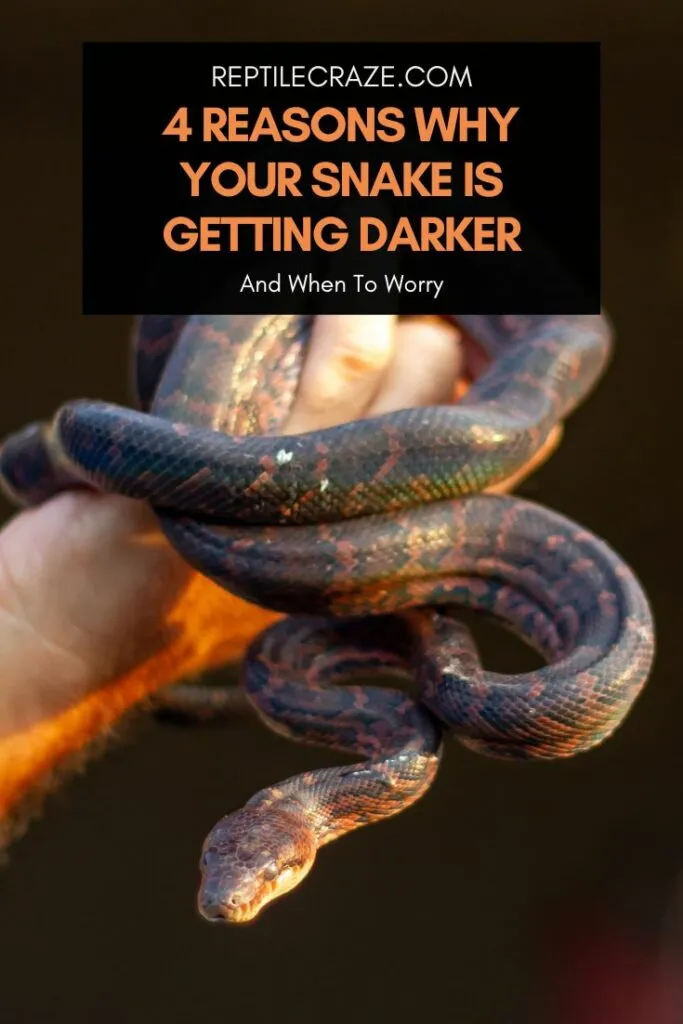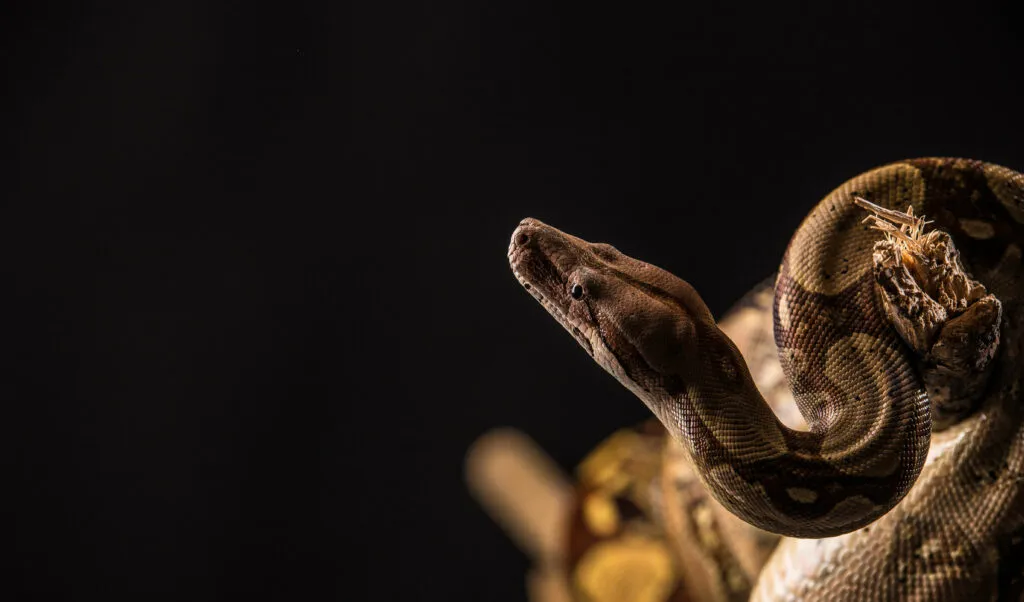
If you’re relatively new to keeping snakes as pets, some of their behavior can seem completely out of place when contrasted with the more well-known behavior of dogs and cats. The main concern for new owners is not picking up on important physical symptoms – like their snake changing color – which may point to some type of illness.
In this article, we’ll have a look at the different reasons why your snake may be getting darker in color or changing color. We’ll also note when it’s important to get your snake to a vet, and when the change is part of the snake’s natural life cycle.
Table of Contents
Reason Why Your Snake Is Getting Darker
There are various reasons why your snake may be turning a darker color. While this could be serious and need a vet visit, it could also simply be a part of their natural lives. Below are four reasons why your snake is getting darker, starting with the aging process.
1. The Aging Process
Some snakes, for example ball pythons (Python regius) and rat snakes (Pantherophis) are born with quite bright colors and patterns. These colors fade over time and become darker and more muted.
Because ball pythons and many other snakes kept in captivity can live such long lives, their coloring is one way of telling their approximate age (the other is their patterns and whether these are symmetrical or not).
In a paper by H. Bernard Bechtel, he notes that some color changes with regard to the brightness, saturation, and hue of a snake’s colors is quite normal as the snake grows to become sexually mature.
Rat snakes, for example, change so much that the juveniles and adults look as if they should be different species.
2. Burns
Pet snakes can easily get burnt in their tanks if certain safety precautions aren’t followed. These burns – if not severe – can turn their scales dark brown or black.
Severe burns, however, will cause blisters and deep tissue damage as well. This can easily lead to your snake’s death if not treated.
Note! If you suspect that your snake has a burn wound on their body, you need to get them to the vet immediately for treatment. This is not the time for home remedies.
How To Keep Your Snake From Getting Burnt In Their Tank
Besides the correct habitat regarding temperature and humidity in your snake’s tank, their overall safety while inside the
This is because snakes can easily get burned (and burnt seriously as well) when they come into contact with lightbulbs or other heat sources.
When you’re setting up your snake’s
Also, steer clear of “heat rocks”, “hot rocks”, or “sizzle stones” as these can get too hot for your snake and, before they even realize that they’re too hot, they get burned.
You should also not put any branches or other decor too close to the light or heat sources as your snake can get up there far too easily and then also get burned by accident.
The same goes for heat mats – you need to be very careful when using them and, if you decide to use them, where you’re placing them to keep your snake safe from harm.
Your snake should also not be out of their

3. Getting Ready To Shed Old Skin
When your snake gets ready to shed their skin, they also change color, becoming dull and grey with milky blue eyes. Sometimes your snake may even get dull and grey in patches and not all over.
This color change is completely normal and needs no intervention from you except making sure that the humidity in the
Once your snake has shed their skin, they’ll have their bright colors and markings back. You may find that your snake gets a bit aggressive when their eyes are milky for a few days.
This aggression is simply because they cannot see well for those few days. It’s, therefore, better not to handle them during this time unless it’s absolutely necessary.
4. High Humidity And Scale Rot
One of the most problematic reasons why your snake may be getting darker, is that they’re suffering from scale rot. This illness can cause brown discoloration of a snake’s scales.
Scale rot is usually caused by damp, unsanitary conditions in a snake’s
In scale rot, blisters form underneath the affected snake’s scales as their body tries to fight against the bacterial infection.
These blisters can even push their scales upwards – definitely not something you want to have happen. It’s then these affected scales that have the brown edges and make it look as if your snake is turning darker.
It’s very important to correct your snake’s
Their
When You Should Worry About Your Snake Getting Darker
Although there are times that you don’t have to worry about your snake getting darker or its color changing (for instance, when they’re about to shed their skin), there are times when your snake will need immediate veterinary care.
If your snake shows any of the following symptoms, you should get them to the vet as soon as possible.
Signs You Need To Take Your Snake To The Vet
- Sudden color changes; a sudden color change can mean that your snake suffered a burn wound. Check your snake for any blistering as well, as severe burns can cause blisters to form.
- Dull coloring that’s not caused by your snake getting ready to shed their old skin.
- Blisters and/or brown coloring of the edges of their scales, as this means that they’re suffering from scale rot.
- Lethargy or any other symptoms that indicate illness.
Are There Snakes That Change Color Completely?
The green python (Morelia viridis) of Australia and New Guinea’s color change from juvenile to adult is spectacular. They start their lives as either bright red or bright yellow but then turn bright green when they reach adulthood.
Scientists only recently discovered the reason for this change in appearance; the juvenile green pythons live outside the rainforest and are camouflaged in the grass by the yellow and red coloring.
However, the adult green pythons are arboreal and live in the tree canopies in the rainforest.
Can Snakes Change Their Color Like Chameleons?
Although it has long been thought that snakes can’t change colors like a chameleon, nature always has a surprise in store. In the case of snakes, it’s the Kapuas Mud Snake (Enhydris gyii) that’s native to Borneo.
This snake can change their epidermal color at will – it turns pale when placed inside a dark bucket. This remarkable snake, with its chameleon-like behavior, was only found (by accident) in 2005!
Conclusion
Although there are times when your snake’s color change is simply part of their natural life cycle, it’s always a good idea to keep an eye out in case the color change has nothing to do with an oncoming shedding of their skin or age-appropriate color change.
Good husbandry is the first step to ensuring that your snake lives a long, healthy and happy life in their forever home.
- Eastern Rat Snake: Nature’s Pest Control and Fascinating Reptile - September 20, 2024
- Eastern Racer: The Fast and Agile Snake - September 19, 2024
- The Eastern Indigo Snake: The Majestic, Non-Venomous Hunter of the Southeast - September 18, 2024
